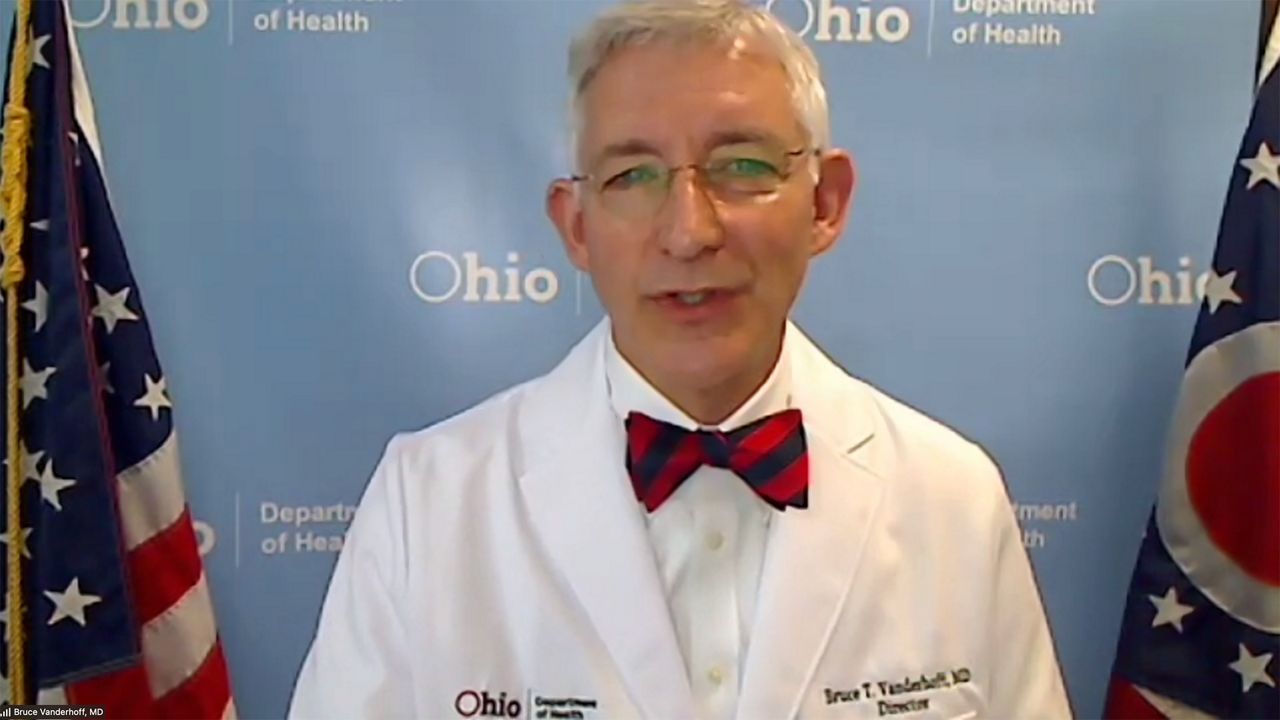COLUMBUS, Ohio — Ohio Health Director Dr. Bruce Vandherhoff reported rising COVID-19 levels during a news conference Wednesday as the Ohio Department of Health launched a new testing and treatment website.
What You Need To Know
- Health officials encouraged residents to get boosters and make plans for testing and treatment
- Cases and hospitalizations are rising in Ohio as new sub-variants of omicron continue to emerge
- The Ohio Department of Health launched a new testing and treatment website on Wednesday
Vanderhoff expressed confidence that Ohio is prepared to manage an uptick in virus levels if residents take advantage of vaccines, testing and treatments.
“Although COVID-19 isn’t going away any time soon, we more and more have the tools to live with this virus much more effectively provided we utilize the tools we have effectively,” Vanderhoff said.
In Ohio, 87 of 88 counties are in the green on the Centers for Disease Control and Prevention's map, which is the low transmission rate for which the agency doesn't have mask recommendations. Lawrence County is yellow, which is the medium tier, meaning that high-risk residents are advised to consider wearing a mask.
On Wednesday, the Ohio Hospital Association reported 607 virus patients were hospitalized. Vanderhoff said this includes some patients who are admitted primarily for another non-COVID condition.
The state’s hospitalization numbers have more than doubled since a low point one month ago.
Ohio will report case numbers and other COVID-19 metrics in a weekly update on Thursday.
The Ohio Department of Health has changed its hours for what was formerly a 24/7 COVID-19 hotline, Vanderhoff announced. The phone line will still be available during regular business hours.
OhioHealth infectious disease expert Dr. Joe Gastaldo, who joined Vanderhoff for the virtual news conference, encouraged high-risk Ohio residents in particular to make a plan for getting a therapeutic treatment if they contract the virus. He said many Ohio residents are eligible for oral pills based on definitions of high risk.
“When you look at the collection of high-risk conditions, there are things out there that we're all very familiar with like diabetes, heart disease, lung disease, liver disease, kidney disease… physical inactivity, people with neurological conditions, people who are disabled, people who are overweight, people who are living with substance abuse disorder,” he said.
Gastaldo said the vaccines are reducing severe illness, but the therapeutics reduce risk even further for high-risk groups.
“The vaccines are still performing extraordinarily well of keeping you out of the hospital and preventing you from dying,” he said. “The vaccines are working well. They were never intended to stop all infection."



